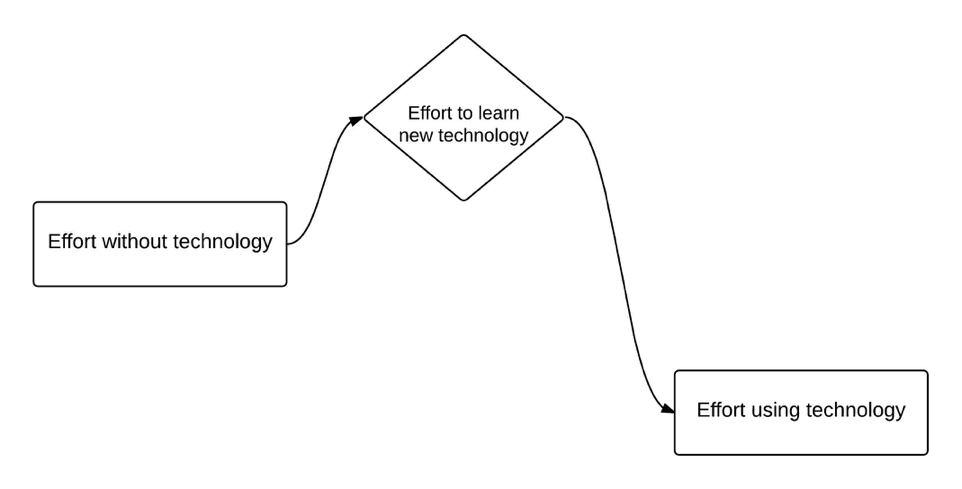Computers and information technologies have an interesting characteristic:
We can use it to be more efficient in our work, but getting to that point requires a temporary decrease in efficiency.
We can illustrate this with this picture:

When we are using a “primitive” technology, we must exert a certain (and familiar) level of energy and time to accomplish a task. Consider grading a multiple choice test– it takes a teacher time to write the test, copy it, administer it, then check students’ answers against the “correct” answers (I use quotation marks because it is far more difficult than it first appears to determine “correct,” but that is for another post), then record grades.
The teacher who uses the testing feature built into any learning management system will find it requires far less effort to administer, “correct,” and record scores on the same multiple choice test. Creating that test in the LMS does require far more effort compared to creating the test using a traditional method, however. While that is not difficult to create the test on the LMS, it does require many mouse clicks and reviewing selections before submitting items (to prevent problems later), and one is dealing with the latency of using remote systems (even a delay of a second or two can be frustrating when repeated many times).
School and technology leaders who recognize this and organize design activities so that this work is shared and that files that are digitized can be easily reused will ensure the greatest number of educators participate in the design work and everyone sees the greatest return on the investment of time is creating digital materials.